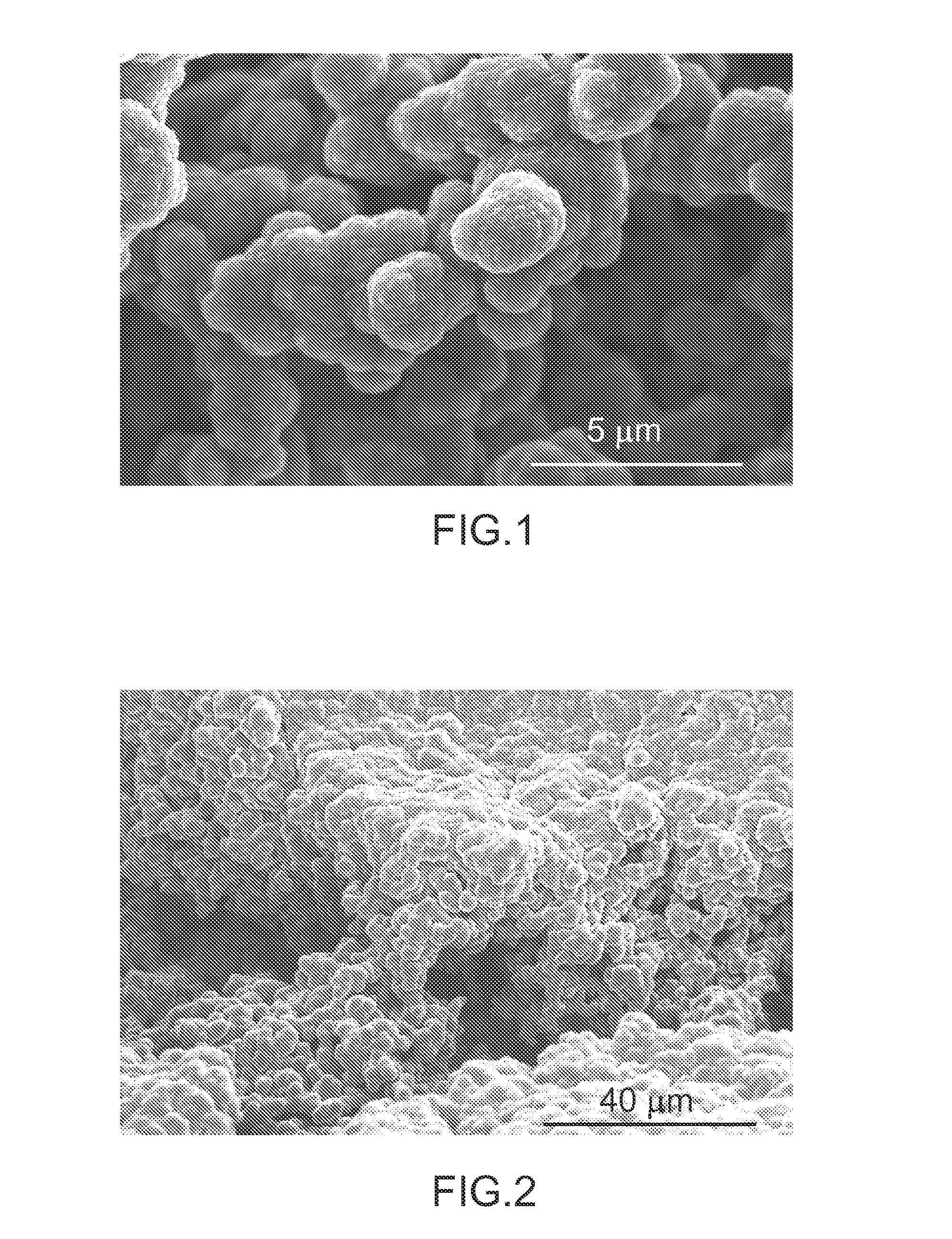Method for manufacturing a porous synthetic diamond material
a synthetic diamond and synthetic diamond technology, applied in the field of manufacturing a porous synthetic diamond material, can solve the problems of affecting the performance of the composite material, the difficulty of performing the transfer step, and the limited diamond surface available to those skilled in the ar
- Summary
- Abstract
- Description
- Claims
- Application Information
AI Technical Summary
Benefits of technology
Problems solved by technology
Method used
Image
Examples
example 1
[0066]A solution of methanol containing 50 mg of pyrrole in 10 mL of liquid is prepared.
[0067]In parallel, 10 mL of an aqueous solution is prepared containing 120 mg of iron chloride and in which a quantity of 0.1% by weight of diamond powder of nanometric size is dispersed by the use of ultra-sounds. The nano-powder SYNDIA® of Van Moppes, in Switzerland, having the reference 11247 is chosen; said powder has the following characteristics: 14.8 carats / kg and a “grade 0-0.02 GAF”, in other words that the diamond powder is conditioned in the form of liquid diamond (it is in solution and not in dry form) and is GAF (guaranteed agglomerate free), with particles of sizes comprised between 0 and 0.02 μm.
[0068]Then, the methanol solution is poured into the aqueous solution and the solution thereby obtained is vigorously stirred for around 1 minute. Said solution is then kept at a temperature of 4° C. for 12 hours.
[0069]A black precipitate of polypyrrole doped with the diamond nano-powder is...
example 2
[0078]According to a variant of the invention, polypyrrole is manufactured in the following manner.
[0079]A solution of 4 moles per litre of iron chloride dissolved in tri-ethylene glycol is deposited on a silicon substrate.
[0080]The substrate is then placed in a desiccator in which is also introduced a beaker containing 5 mL of pyrrole. Nitrogen is made to flow in the desiccator at a flow rate of 300 mL per minute and for a time of 3 hours, which corresponds to the polymerisation time.
[0081]The pyrrole vapours diffuse in the oxidising solution of iron chloride and thereby form a precipitate of polypyrrole in the solution.
[0082]The substrate is then thoroughly rinsed in acetonitrile until a clear solution is obtained without iron chloride.
[0083]The substrate is then dried in air, then immersed for 5 minutes in an ethanol solution containing 1% by weight of dispersed diamond powder of nanometric size. As in example 1, the nano-powder SYNDIA® of Van Moppes having the reference 11247 is...
PUM
| Property | Measurement | Unit |
|---|---|---|
| Size | aaaaa | aaaaa |
| Size | aaaaa | aaaaa |
| Porosity | aaaaa | aaaaa |
Abstract
Description
Claims
Application Information
 Login to View More
Login to View More - R&D
- Intellectual Property
- Life Sciences
- Materials
- Tech Scout
- Unparalleled Data Quality
- Higher Quality Content
- 60% Fewer Hallucinations
Browse by: Latest US Patents, China's latest patents, Technical Efficacy Thesaurus, Application Domain, Technology Topic, Popular Technical Reports.
© 2025 PatSnap. All rights reserved.Legal|Privacy policy|Modern Slavery Act Transparency Statement|Sitemap|About US| Contact US: help@patsnap.com


